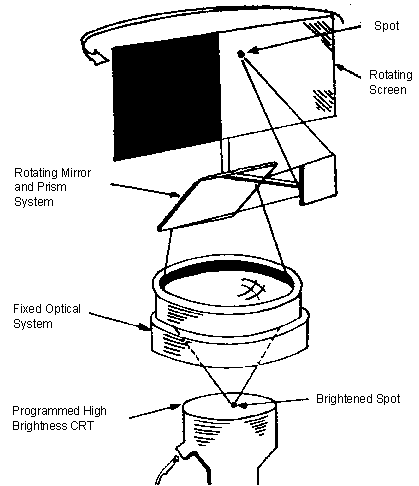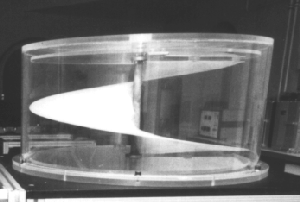
One of the first SVIT's was created in 1960 by ITT Laboratories. It used a cathode ray tube (CRT) whose blips were transferred to a translucent rotating screen within a glass cylinder. The motor-driven panel turned at approximately 20 revolutions per second, creating the many "pages" of this cylindrical flip book.

Since then, many different configurations have been attempted in SVIT's. Some have used spheres rather than cylinders, and some have even used double or single helices as projection screens.


The number of rotations per second has increased, and the materials from which the projection screens are made have changed. One widespread change in the design of SVIT's is in the adaptation of lasers as projection tools. The simplicity and preciseness of lasers make them an optimal tool in creating SVIT's, and they are now used almost exclusively.
|
| ||
BACK |
|
NEXT |